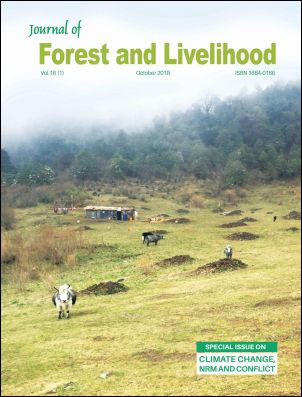Pond Becomes a Lake: Challenges Posed by Climate Change in the Trans-Himalayan Regions of Nepal
DOI:
https://doi.org/10.3126/jfl.v16i1.22884Keywords:
Community story, climate change, livestock, socio-ecology, Trans-Himalayan regionAbstract
Satellite images, repeated photography, temperature and precipitation data, and other proxy scientific evidences support the claim that climate is changing rapidly in Nepal, including in the Trans-Himalayan regions of the country. Climate change in the Trans-Himalayan region of Nepal is altering the existing relations of functional socio-ecological system for generations. This ethnographic assessment of Nhāson village looks at the disturbance posed by climate change to the social and ecological relationship in reference to livestock management practices. It focuses on two thematic areas of communities’ verbalisation of issues and challenges faced by the mountain herders in the climate change context. This paper is the product of ethnographic study between the years 2012 and 2014 in Nhāson. The locals’ attachment to environment and witnesses of change is capable of telling the story on the disturbance of climate change in the social and ecological systems, contextually. The stories gathered during walking, herding, travelling, watching and observing of the places are “real stories” with insights into the past climate variability and fluctuation which is critically valuable to understand the environmental phenomena at times when scientific evidences are not sufficient. Ethnographic study can contribute in documenting the place and cultural specific stories as a powerful evidence to climate change and its impact on grounded social and ecological systems.
Downloads
Downloads
Published
How to Cite
Issue
Section
License
CC-BY-NC: This license allows reusers to distribute, remix, adapt, and build upon the material in any medium or format for noncommercial purposes only, and only so long as attribution is given to the creator.





